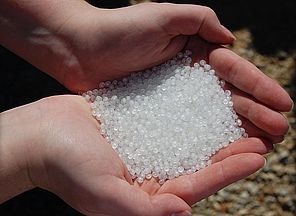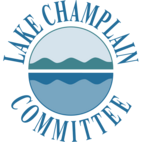Nurdles to Neuston
February 2014

Nurdles – pre-production microplastic resin pellets used in plastic manufacturing. The term is sometimes used more broadly to refer to any small plastic particle including microbeads used in cosmetics as exfoliants and in detergents for cleaning.
Neuston – the collection of minute or microscopic organisms that inhabit the surface layer of a body of water
Plastics are everywhere. Try shopping for household goods and not coming home with plastic products. It’s almost impossible. Plastic does not degrade easily, yet so many plastic products are designed to be thrown away. Given that, it should come as no surprise that plastics are ending up in waterways.
Perhaps the most famous example of plastic pollution in our waters is The Great Pacific Garbage Patch. This is a region of the North Pacific Ocean with an exceptionally high concentration of plastics and other debris which have been trapped by the North Pacific Gyre. Similar patches exist in the North Atlantic, South Pacific, and the Indian Oceans. Though the patches do contain higher concentrations of litter and debris than other parts of the ocean, they are not necessarily visible, even when you are in them. Most of the debris consists of microplastics - very small particles of floating plastic that are difficult to see.
Some of the microplastics result from the degradation of larger plastic products. Sunlight and salt water can break down larger objects that wash directly to the sea. Perhaps more importantly, when garbage is incinerated, tiny pieces of plastic can escape in the ash emitted from the smokestack.
Other microplastics are small resin pellets that are a by-product of plastic production. These tiny beads, called nurdles can be re-melted and molded into different plastic goods. The beads are used in packing to provide cushioning. Very small microbeads of plastic are also used as exfoliants in soaps and as abrasive cleaning agents in detergents. Nurdles are small enough to pass through sceens at wastewater treatment facilities.
Recently, a paper in the Marine Pollution Bulletin reported the existence of widespread plastic pollution in the Great Lakes as well as oceans. The work was organized and conducted by researchers from the State University of New York at Fredonia and 5 Gyres, a non-profit dedicated to reducing plastic pollution in the environment.
The researchers dragged small mesh nets behind their boats and found microplastics in 20 of 21 sites investigated on three of the Great Lakes: Huron, Superior, and Erie. The highest concentrations were in Lake Erie. One site, at the eastern end of Lake Erie between Erie, PA and Buffalo, NY, had over 466 thousand pieces per square kilometer, a greater density than all other sites combined. Laboratory analysis of the microplastics demonstrated that the majority of them had the same shape, size, and chemical composition of microbeads.
There is growing concern that the plastics have an environmental impact beyond just being litter. Research indicates that microplastics may provide a means by which persistent chemical pollutants like PCBs and dioxins are transferred from the environment to aquatic organisms. The beads could absorb the contaminants and then get ingested by small animals. Fish may mistake the small floating particles for neuston, animals that live at the water surface, and eat them. A study out of the University of California – San Diego suggested that fish in the northern Pacific Ocean swallow between 12,000 and 24,000 tons of plastic each year.
As a result of these recent scientific studies a number of manufacturers of personal care products have agreed to phase out the use of nurdles. Johnson & Johnson, Unilever, and Proctor & Gamble have pledged to replace the nurdles with natural ingredients, but have noted that the shift could take two years or more. The New York State Attorney General recently proposed banning production, manufacture, distribution, and sale of microbeads in New York. Some products, such as Aveda, St. Ives and Burt’s Bees brands, already use natural products including ground walnut shells, jojoba (a desert shrub) beads, oat kernel flour, almond meal, or powdered pecan shell.
No one has ever looked for microplastics in Lake Champlain, but there is no reason to think they are not out there. We do not have the population density to lead anyone to believe that we would find densities similar to the worst case scenario in the Great Lakes. Still, once microplastics get into the water they do not disappear, and consumer choices can reduce the probability that they ever reach the water. Look for soaps with natural exfoliating agents or use pumice or a wash cloth to scrape away dry skin. We don't need to wait for industry to act to scrub plastic-infused personal care products from our homes.
Lake Look is a monthly natural history column produced by the Lake Champlain Committee (LCC). Formed in 1963, LCC is the only bi-state organization solely dedicated to protecting Lake Champlain’s health and accessibility. LCC uses science-based advocacy, education, and collaborative action to protect and restore water quality, safeguard natural habitats, foster stewardship, and ensure recreational access.
Get involved by joining LCC using our website secure form (at www.lakechamplaincommittee.org), or mail your contribution (Lake Champlain Committee, 208 Flynn Avenue - BLDG 3 - STUDIO 3-F, Burlington, VT 05401), or contact us at (802) 658-1414, or lcc@lakechamplaincommittee.org for more information.
